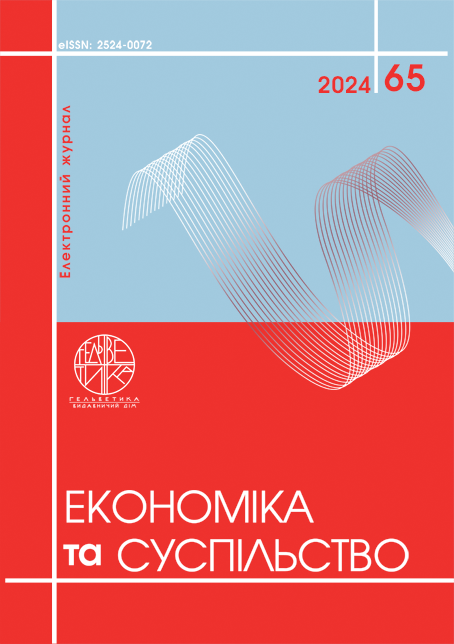МОДЕЛІ ВЗАЄМОДІЇ ВЛАДИ ТА ГРОМАДЯНСЬКОГО СУСПІЛЬСТВА В КРАЇНАХ ЄВРОПЕЙСЬКОГО СОЮЗУ
Анотація
Стаття присвячена аналізу моделей взаємодії влади та громадянського суспільства в країнах Європейського Союзу, розглядаючи їх вплив на підвищення ефективності управління, прозорості державних інститутів та участі громадян у процесах прийняття рішень. В дослідженні вивчаються ключові моделі взаємодії, такі як партнерські стосунки, консультаційні механізми та механізми громадського контролю, а також їх практична реалізація в різних країнах ЄС. Особливу увагу приділено перевагам та викликам, що виникають при впровадженні цих моделей. Закцентовано увагу на важливості адаптації європейського досвіду до специфічних умов України, зокрема в контексті сучасних політичних і соціальних викликів. Висвітлено, як ефективні моделі взаємодії можуть сприяти розвитку демократичних процесів, зміцненню довіри до влади та покращенню управління в умовах криз. Результати дослідження можуть бути корисними для розробки стратегій взаємодії держави та громадянського суспільства в Україні, зокрема в умовах післявоєнного відновлення.
Посилання
Models to Promote Cooperation between Civil Society and Public Authorities: International Center for Not-for-Profit Law (ICNL). URL: https://www.icnl.org/wp-content/uploads/cfr_Models-to-Promote-Cooperation-Working-Paper.pdf (дата звернення: 19.08.2024 р.).
Divjak T., Forbici G. The future evolution of civil society in the European Union by 203. European Union: Visits and Publications. 2017. 59 р. URL: https://www.eesc.europa.eu/sites/default/files/files/the_future_evolution_of _civil_society_in_the_eu_by_2030.pdf (дата звернення: 19.08.2024 р.).
Keijzer N., Bossuyt F. Partnership on paper, pragmatism on the ground: the European Union’s engagement with civil society organisations. Development in Practice. 2020. Vol. 30. Рр. 784–794. URL: https://www.tandfonline.com/doi/full/10.1080/09614524.2020.1801589#abstract (дата звернення: 19.08.2024 р.).
Лізаковська С. В. Європейські стандарти взаємодії органів публічної влади з інститутами громадянського суспільства. Public Administration and Regional Development. 2020. №8 С. 422–444. URL: https://pard.mk.ua/index.php/journal/article/view/186/150 (дата звернення: 19.08.2024 р.).
Dynnyk I. Mechanisms of interaction between the state and civil society in the conditions of decentralization: the experience of CEE countries for Ukraine. The formation and peculiarities of the implementation of the European Union’s Eastern policy: Scientific monograph [science eds. T. Astramovich-Leik, Ya. Turchyn]. Riga, Latvia : Baltija Publishing, 2022. 110–123. URL: http://baltijapublishing.lv/omp/index.php/bp/catalog/download/246/6934/14440-1?inline=1 (дата звернення: 19.08.2024 р.).
Models to Promote Cooperation between Civil Society and Public Authorities: International Center for Not-for-Profit Law (ICNL). URL: https://www.icnl.org/wp-content/uploads/cfr_Models-to-Promote-Cooperation-Working-Paper.pdf (дата звернення: 19.08.2024 р.).
Divjak T., Forbici G. The future evolution of civil society in the European Union by 203. European Union: Visits and Publications. 2017. 59 р. URL: https://www.eesc.europa.eu/sites/default/files/files/the_future_evolution_of _civil_society_in_the_eu_by_2030.pdf (дата звернення: 19.08.2024 р.).
Keijzer N., Bossuyt F. Partnership on paper, pragmatism on the ground: the European Union’s engagement with civil society organisations. Development in Practice. 2020. Vol. 30. Рр. 784–794. URL: https://www.tandfonline.com/doi/full/10.1080/09614524.2020.1801589#abstract (дата звернення: 19.08.2024 р.).
Lizakovska S. V. (2020). Yevropeiski standarty vzaiemodii orhaniv publichnoi vlady z instytutamy hromadianskoho suspilstva [European standards of interaction between public authorities and institutions of civil society]. Public Administration and Regional Development, 8, pp. 422–444. Available at: https://pard.mk.ua/index.php/journal/article/view/186/150 (accessed August 19, 2024).
Dynnyk I. Mechanisms of interaction between the state and civil society in the conditions of decentralization: the experience of CEE countries for Ukraine. The formation and peculiarities of the implementation of the European Union’s Eastern policy: Scientific monograph [science eds. T. Astramovich-Leik, Ya. Turchyn]. Riga, Latvia : Baltija Publishing, 2022. 110–123. URL: http://baltijapublishing.lv/omp/index.php/bp/catalog/download/246/6934/14440-1?inline=1 (дата звернення: 19.08.2024 р.).

Ця робота ліцензується відповідно до Creative Commons Attribution 4.0 International License.


